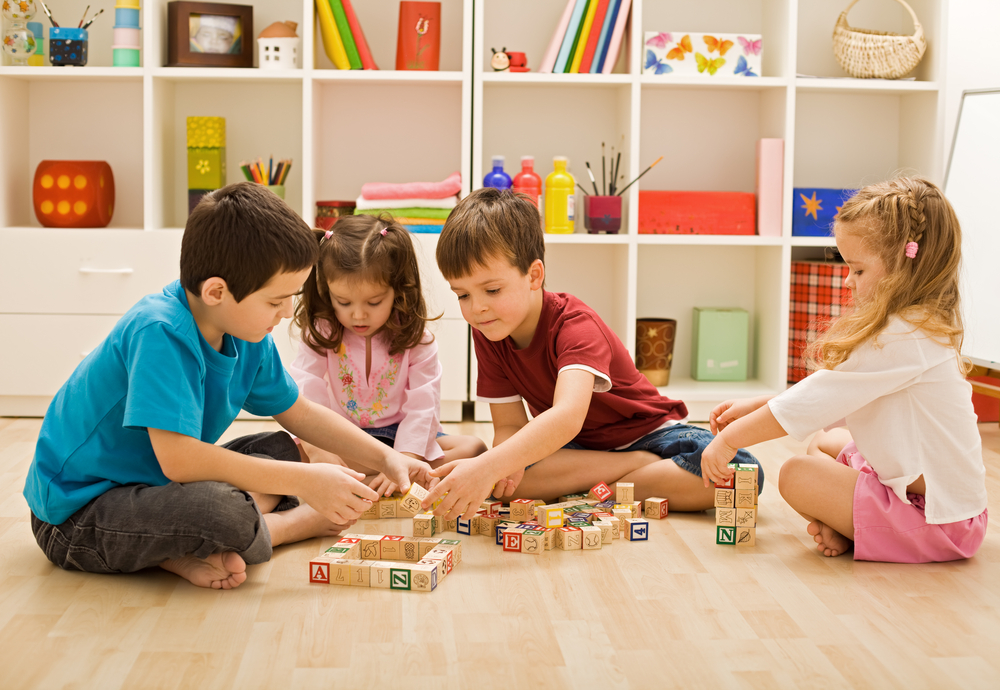Understanding pollination Worksheets for Ages 7-9
4 filtered results
-
From - To
Explore the fascinating world of pollination with our engaging worksheets designed for children ages 7-9. These educational resources provide a fun and interactive way for young learners to understand the critical role pollination plays in plant reproduction and food production. Through a variety of activities, including puzzles, diagrams, and quizzes, students will discover the role of bees, birds, and other pollinators in nature. Our worksheets are perfect for classroom use or home learning, fostering curiosity and awareness about ecosystems. Enhance your child’s learning experience as they connect with nature and appreciate the importance of preserving our environment!
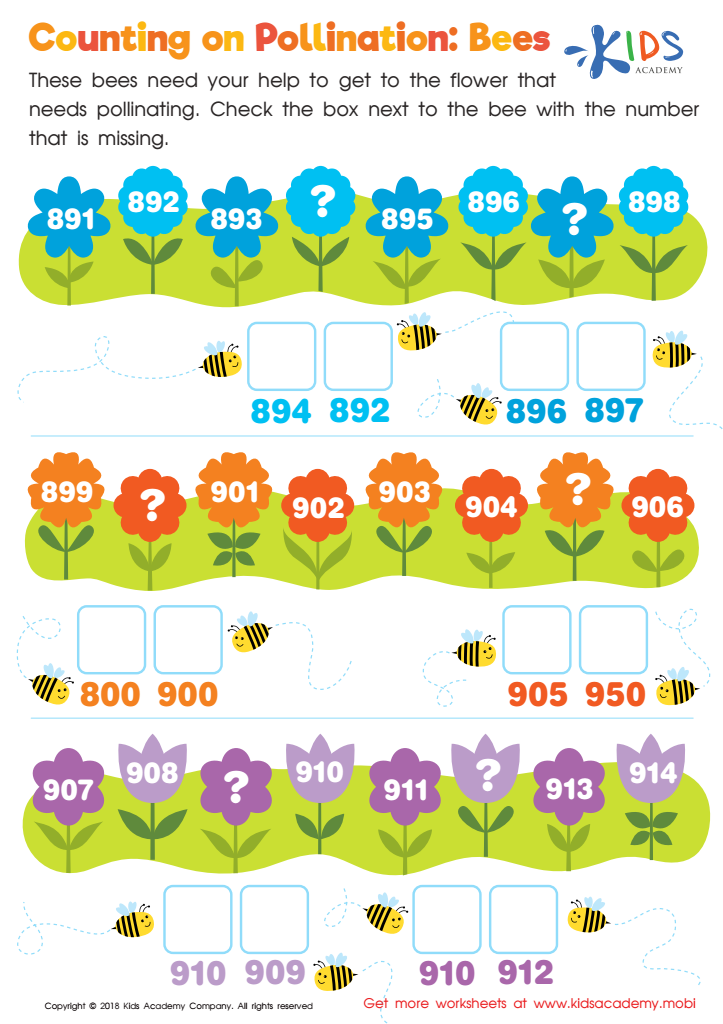

Counting on Pollination: Bees Worksheet
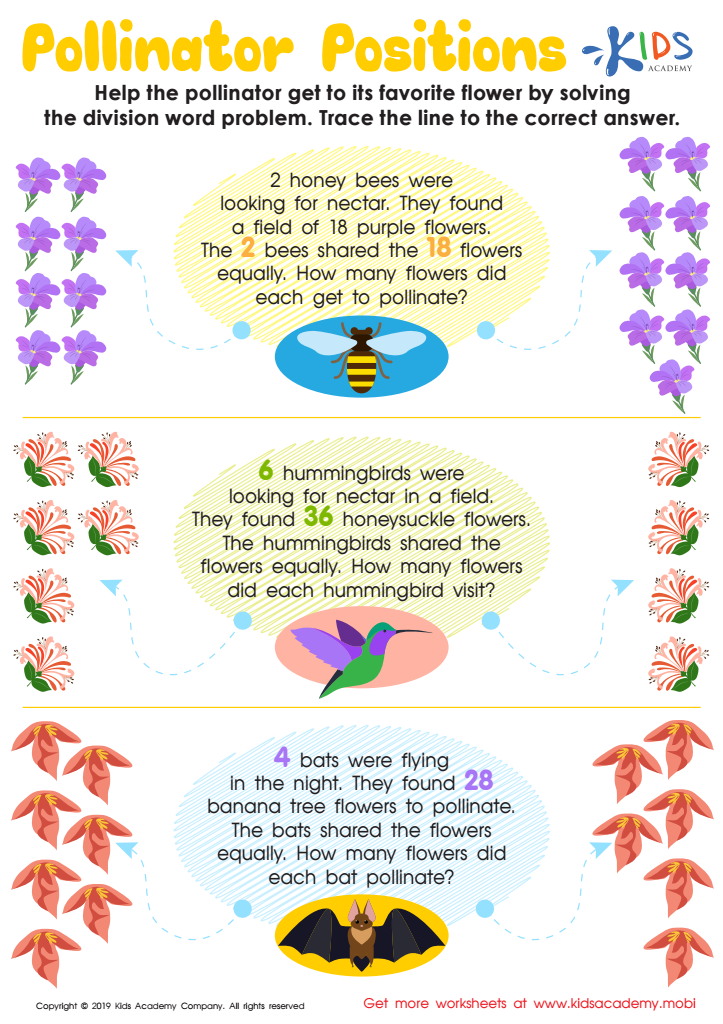

Pollinator Positions Worksheet
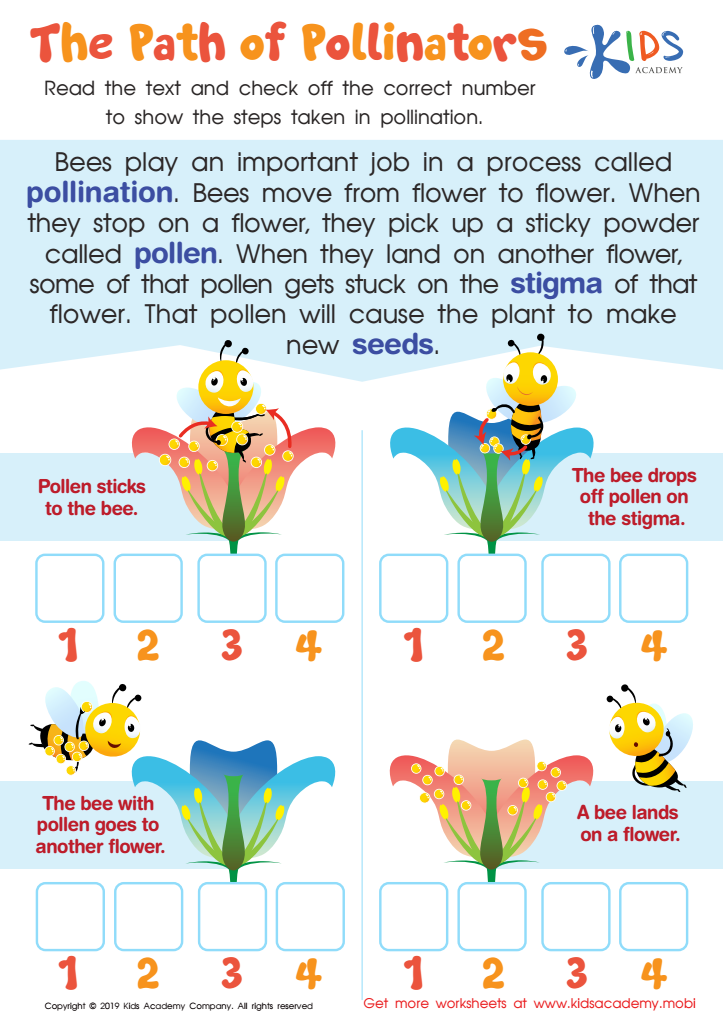

The Path of Pollinators Worksheet
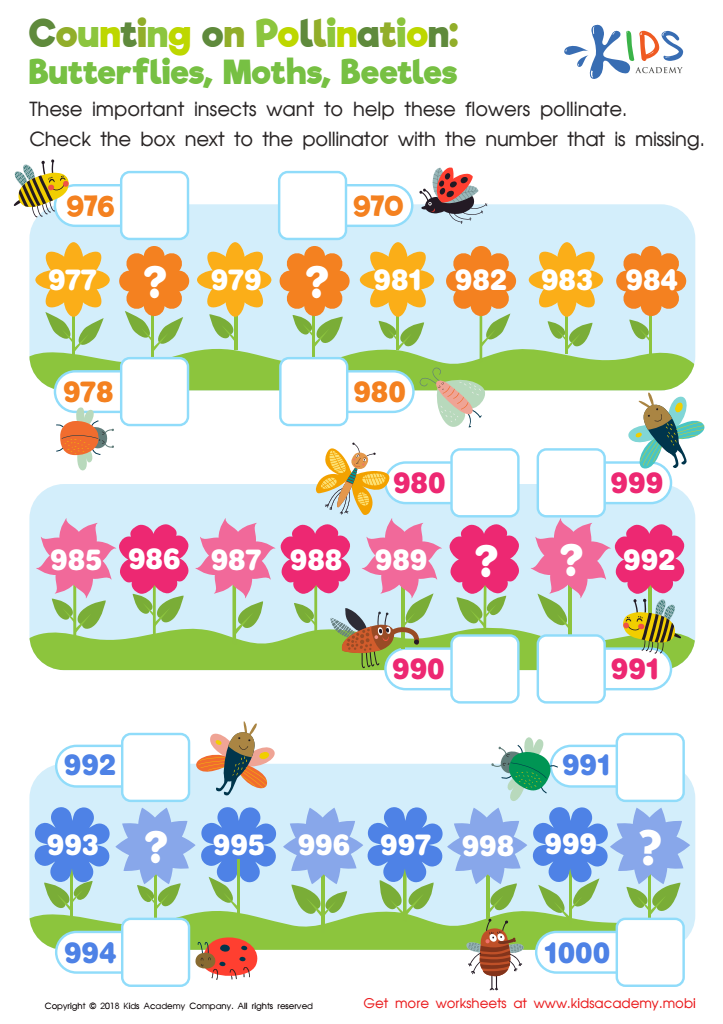

Counting on Pollination: Butterflies, Moths, Beetles Worksheet
Understanding pollination is essential for children aged 7-9, as it nurtures their connection to nature and builds awareness of ecosystems. For parents and teachers, it’s crucial to emphasize that pollination is vital to food production, as many fruits and vegetables depend on it. By grasping how plants reproduce with the help of bees, butterflies, and other pollinators, children learn where their food comes from, fostering an appreciation for healthy eating and agriculture.
Moreover, this knowledge can spark curiosity and promote scientific thinking. Engaging in discussions or activities about pollinators encourages observational skills and critical thinking. It allows children to explore concepts such as the interdependence of species, emphasizing how humans impact the environment.
Understanding pollination also fosters environmental responsibility. Children who learn about the decline of pollinators due to habitat loss and pesticide use can become advocates for conservation, helping to protect these essential species for future generations. By educating young learners about pollination, we equip them with the understanding and empathy necessary to advocate for a healthier planet, making it a vital topic for parents and teachers to prioritize in early education.
 Assign to My Students
Assign to My Students







